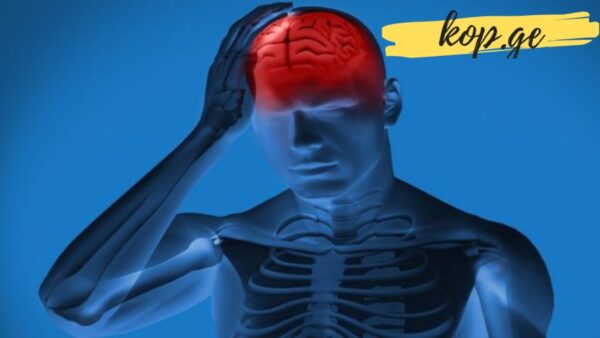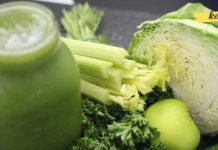The Massage That Can Finally Relieve Headaches – How to Heal Yourself

Almost all of us know what it feels like to experience a headache. It can range from a dull pressure that makes it difficult to concentrate to an unbearable throbbing that interrupts daily life. To cope with this discomfort, many people rely on quick fixes: taking painkillers, drinking an extra-strong cup of coffee, taking a short nap, wrapping the head tightly with cloth, or trying other improvised remedies. While these methods may bring temporary relief, they often fail to address the underlying causes of the pain.
A gentler, natural, and surprisingly effective alternative comes from traditional Eastern medicine—acupressure massage. This self-care technique can be practiced at home, requires no equipment, and works by stimulating specific points on the body to release tension, improve circulation, and promote natural healing.
What Is Acupressure?
Acupressure is an ancient healing practice rooted in traditional Chinese medicine (TCM). It is based on the same principles as acupuncture but does not involve needles. Instead, acupressure uses gentle, sustained pressure—applied with the fingers, palms, or knuckles—on specific points of the body known as acupoints.
According to TCM, energy known as “Qi” flows through pathways in the body called meridians. When this flow is blocked or disrupted, pain and illness can occur. Stimulating acupoints helps restore balance, release muscle tension, and enhance blood circulation. Modern research suggests that acupressure may also activate the nervous system, release endorphins (the body’s natural painkillers), and reduce stress hormones.
For headaches, acupressure has been shown to relax tight muscles in the neck and shoulders, reduce blood vessel constriction, and even ease side effects of treatments like chemotherapy. Best of all, it is safe to perform on yourself once you learn the basic techniques.
How to Use Acupressure for Pain Relief
You don’t need special training to begin. With your own hands, you can target key points associated with headaches and other types of pain. The following techniques are simple, effective, and can be practiced anywhere—at home, at work, or even while traveling.
1. For Neck Pain
Neck tension is one of the most common triggers of headaches, especially those linked to stress or poor posture. To release this tension:
Place both hands behind your head as shown in traditional acupressure guides.
Use your thumbs to press into the base of your skull, where your neck muscles meet the head.
Apply firm, circular pressure for 30 seconds, then release.
Repeat this several times a day to keep the muscles relaxed and improve blood flow to the brain.
2. For Headaches
One of the most well-known acupressure points for headaches is called LI4 (Hegu), located on the hand between the thumb and index finger.
Interlace your hands together.
Pinch the fleshy area between your thumb and index finger using the thumb and index finger of the opposite hand.
Apply steady pressure for 1 minute, then switch to the other hand.
This method is especially effective for tension headaches and can also help reduce stress.
3. For Pain Above the Heel
Pain or tension around the heel and ankle area can sometimes radiate upward and contribute to leg discomfort, which indirectly affects posture and may worsen headaches.
Hold your heel with your thumb and index finger.
Massage the area just above the heel with circular movements for 30 seconds.
Repeat this exercise several times a day to improve circulation in the lower body.
4. For Foot Arch Pain
Foot health is closely linked to overall body alignment and comfort. Stimulating the arch of the foot can relieve fatigue and tension that contribute to headaches.
Sit comfortably on a chair.
Place your left foot across your right thigh.
Use your thumb to press into the center of your foot arch.
Massage in circular motions for 1 minute, then switch to the other foot.
Repeat daily for best results.
5. For Knee Pain
Knee discomfort, whether from injury, arthritis, or strain, can alter posture and cause secondary tension in the hips and back, which sometimes triggers headaches. To relieve knee pain:
Sit on the floor with legs bent.
Place three fingers directly on the area beside your kneecap, as recommended in acupressure charts.
Apply gentle, circular pressure with all three fingers for 1 minute.
Repeat several times daily to strengthen circulation and reduce stiffness.
Why Acupressure Works
Unlike quick fixes such as caffeine or painkillers, acupressure addresses both the symptoms and the root causes of pain. By targeting multiple points on the body, it promotes relaxation, encourages better posture, and restores energy flow. Research has shown that acupressure can:
Relieve tension headaches caused by stress and muscle stiffness.
Reduce migraine frequency and intensity when practiced regularly.
Improve sleep quality, which in turn lowers headache frequency.
Ease side effects of chronic illness treatments, including nausea and fatigue.
Support overall emotional well-being by lowering anxiety and stress hormones.
Tips for Practicing Acupressure at Home
Be Gentle: You should feel firm pressure but not pain. If it feels uncomfortable, reduce the intensity.
Breathe Deeply: Deep, slow breathing during acupressure enhances relaxation and effectiveness.
Stay Consistent: Practicing once may help temporarily, but daily use brings the best long-term results.
Hydrate Afterwards: Drinking water helps flush out toxins released by the massage.
Know When to Seek Help: Acupressure is a helpful tool, but persistent or severe headaches should be evaluated by a medical professional.
Final Thoughts
Headaches are a universal experience, but they don’t have to control your life. While medications and quick remedies may provide short-term relief, acupressure offers a safe, natural, and empowering way to manage pain. With just your hands and a few minutes each day, you can release tension, restore balance, and even prevent headaches from returning.
This ancient healing art reminds us that the body has remarkable self-healing potential. By learning and practicing acupressure, you are not only treating pain—you are also reconnecting with your body, fostering relaxation, and investing in your long-term well-being.












